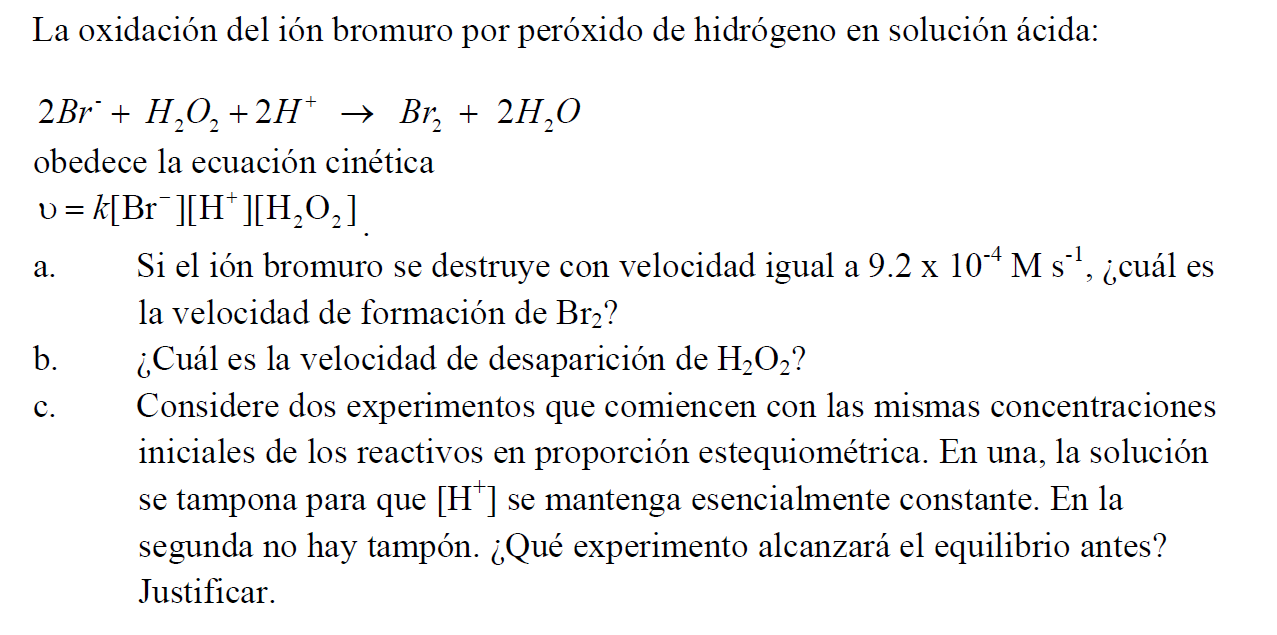¡Tu solución está lista!
Nuestra ayuda de expertos desglosó tu problema en una solución confiable y fácil de entender.
Mira la respuestaMira la respuesta done loadingPregunta: ¡Es en español! : Por favor contesten las siguientes preguntas relacionadas a cinética química. 2Br + H2O2 + 2H---> Br2 + 2H2O this obeys the kinetic formula: V = k[Br-][H+][H2O2] a) If the bromide ion is destroyed with a rate equal to 9.2 x 10-4 M s-1, what is the rate of formation of Br2? b) What is the rate of disappearance of H2O2? c) Consider two
¡Es en español! : Por favor contesten las siguientes preguntas relacionadas a cinética química.
2Br + H2O2 + 2H---> Br2 + 2H2O
this obeys the kinetic formula: V = k[Br-][H+][H2O2]
a) If the bromide ion is destroyed with a rate equal to 9.2 x 10-4 M s-1, what is the rate of formation of Br2?
b) What is the rate of disappearance of H2O2?
c) Consider two experiments starting with the same initials concentrations of the reactants in stoichiometric ratio. In one, the solution is buffered, so that [H+] remains essentially constant.. In the second there is no buffer. Which experiment will reach equilibrium first? Justify.
- Esta es la mejor manera de resolver el problema.Solución100% (1 calificación)Te mostramos cómo abordar esta pregunta.
Este consejo generado con IA está basado en la solución completa de Chegg. ¡Regístrate para ver más!
For part a), compare the rate of destruction of bromide ions with the rate of formation of Br₂ using their stoichiometric relationship.


Estudia mejor, ¡ahora en español!
Entiende todos los problemas con explicaciones al instante y pasos fáciles de aprender de la mano de expertos reales.
